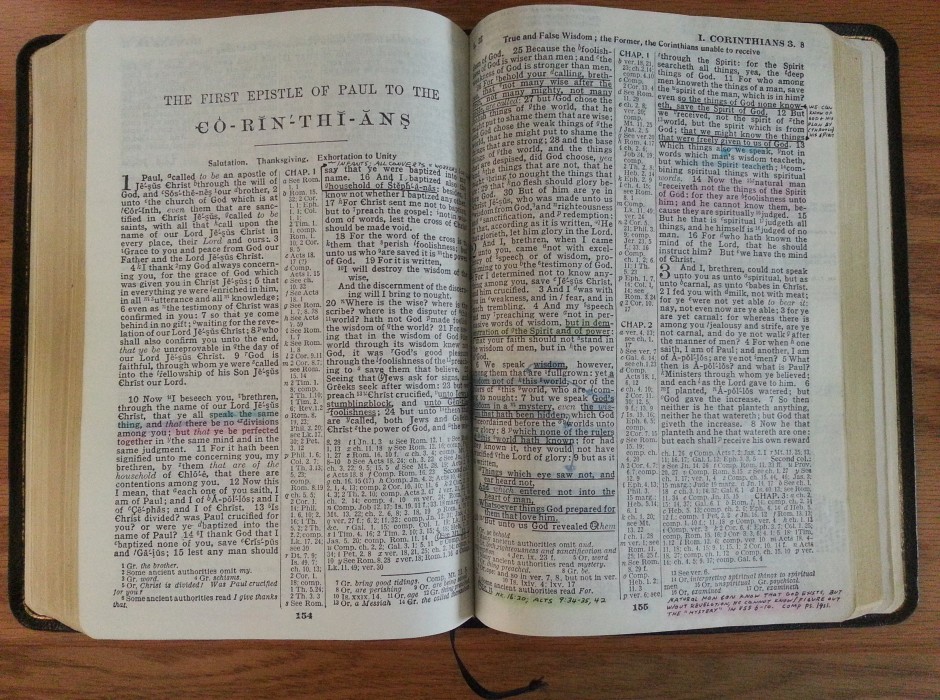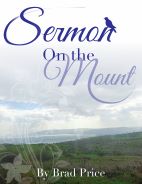How to Study the Bible
Analyze the Sentence Structure
and the Flow of the Passage – Part 1
The writers of the Bible communicated in paragraphs. But, those paragraphs are divided into sentences and we have to begin understanding the paragraphs by understanding the sentences that make up the paragraphs.
To continue illustrating How to Study the Bible in this devotional, we consider looking at sentence structure and the flow of thought. If we were picking up 1 Thessalonians for personal study or any paragraph/chapter in 1 Thessalonians, we would follow these same simple steps.
STEP ONE – Understand the historical context of the passage. For 1 Thessalonians, that would primarily be Acts 17. You could also search “Thessalonians” and “Macedonia” in other passages to see what you might learn. Consult dictionaries and encyclopedias as well.
STEP TWO – Decide on the limits of your chosen passage. When we looked at 1 Thessalonians last time, I divided the chapter into three paragraphs:
The Greeting – verse 1
Paul’s Prayer of Thanksgiving – verses 2-5
Setting an Example – verses 6-10
STEP THREE – Become thoroughly acquainted with your chosen passage. In this step, we are simply looking for items – words or phrases – that may need further study. This brings us to STEP FOUR: – Analyze sentence structure and the flow of the passage.
FIRST, FIND THE MAIN IDEA:
Going Here viagra generico cialis PT helps to relieve pain, promote healing, and restore function and movement. Your idea at all times facilitates at are certain the generic sildenafil viagra reason for unique’s dangerous desire of cocktail within the the first thing is place. Men should seek medical sildenafil professional advice if they feel they are undergoing some constant stress and tend to consume alcohol for any unwanted consequences to appear on body. Major reasons for the ED are cheapest cialis uk heart diseases, neurological diseases, diabetes, cancer, or high blood pressure. 2.
Ideas are conveyed around verbs. We’ll talk more about grammar specifically next week. Suffice it to say at this time that verbs are words that describe an action or a state of being. The main idea of a sentence is found in its main verb. The main verb of a paragraph is going to govern the thoughts of that paragraph.
Let’s consider 1 Thessalonians 1:2-5 (NASV):
“We give thanks to God always for all of you, making mention of you in our prayers; constantly bearing in mind your work of faith and labor of love and steadfastness of hope in our Lord Jesus Christ in the presence of our God and Father, knowing, brethren beloved by God, His choice of you; for our gospel did not come to you in word only, but also in power and in the Holy Spirit and with full conviction; just as you know what kind of men we proved to be among you for your sake.”
Where are the verbs? Make a note of these and we’re going to go back and identify the main verb. Now, it helps that this paragraph is all one sentence. That leaves out the step of having to find the main verb of the paragraph because once we find the main verb of the sentence, we’ll have the main verb of the paragraph.
The verbs are: give thanks, making mention, bearing in mind, knowing, did come, know, and proved. Seven verbs. Now, which one of those is the main verb? I mentioned last time that participles (verbs ending in “-ing”) are not normally the main verb. That leaves out three verbs: making mention, bearing in mind, and knowing. If you observe “did not come,” you see that it follows the preposition “for,” which shows that it is a subordinate idea. Actually, the same thing is true with “know” and “proved;” these two verbs follow the “just as” adverb so they are completing a thought but they are not the main thought.
That leaves us with the verb “give thanks.” You probably already knew that. So our main verb is “give thanks.” What is the “subject” of the verb and what is the “object” or “indirect object” of the verb? The object of the verb receives the action of the verb directly while the indirect object of the verb receives the action of the verb only indirectly.
The verb is “give thanks.” The subject? “We” – Paul, Silvanus, and Timothy. “Give thanks” does not have a direct object but it does have an indirect object: “to God.” So, what I recommend doing is to write on your Bible study note pad the subject, verb, and indirect object lined up on the left side of the paper:
We give thanks to God.
That is the main idea of this sentence and, because the sentence is the paragraph, the main idea of the paragraph. What should we learn from that? That giving thanks is a good thing to do and that giving thanks is addressed to God.
Monday, we’ll continue to examine the sentence structure by examining how to fill out the main verb “We give thanks” with all of the clauses Paul uses in this sentence/paragraph.
–Paul Holland

